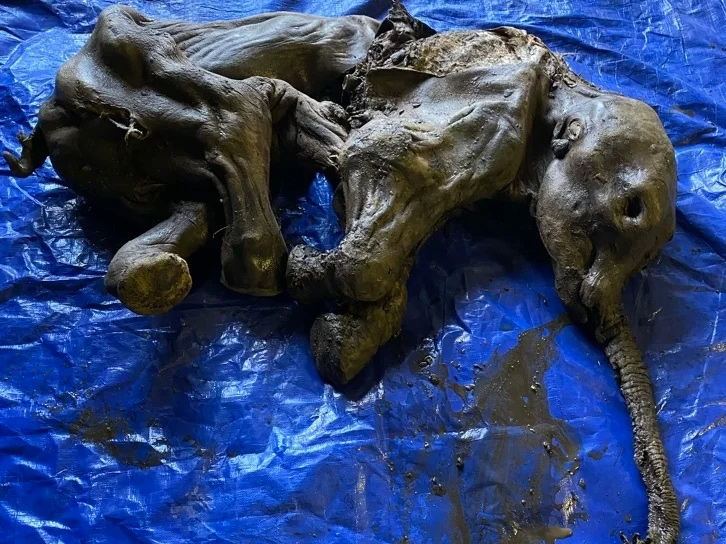 VIEW LARGER A woolly mammoth calf, believed to be female, was found in Canada's Yukon territory buried in ancestral land of the Trʼondëk Hwëchʼin, whose elders named her Nun cho ga, which means "big baby animal" in the Hän language.
VIEW LARGER A woolly mammoth calf, believed to be female, was found in Canada's Yukon territory buried in ancestral land of the Trʼondëk Hwëchʼin, whose elders named her Nun cho ga, which means "big baby animal" in the Hän language. The extinct animal was covered in mud and resting in a fetal position when gold miners discovered the remains this month. Geologists from the Yukon Geological Survey and the University of Calgary believe the mammoth calf was female and likely died in permafrost during the ice age.
Elders of the Trʼondëk Hwëchʼin, whose ancestral land the mammoth was found in, named her Nun cho ga, which means "big baby animal" in the Hän language. Yukon is known for being a fossil trove, but what makes this mammoth rare is how well preserved she is, geologists said in a news release. The remains are believed to be the most complete woolly mammoth discovered in North America. Before her, partial remains of an infant mammoth were unearthed in the continent in 1948.
 VIEW LARGER Wrapping up Nun cho ga following a ceremony with Trʼondëk Hwëchʼin, miners and scientists.
VIEW LARGER Wrapping up Nun cho ga following a ceremony with Trʼondëk Hwëchʼin, miners and scientists. "It has been one of my lifelong dreams to come face-to-face with a real woolly mammoth. That dream came true today. Nun cho ga is beautiful and one of the most incredible mummified ice age animals ever discovered in the world," said Grant Zazula, an ice age paleontologist.
The baby mammoth, considered a relative of modern elephants, likely roamed alongside wild horses, cave lions and giant steppe bison, according to the news release.

By submitting your comments, you hereby give AZPM the right to post your comments and potentially use them in any other form of media operated by this institution.